 I buy most of my horns on eBay and have learned, through long and expensive experience, to examine every instrument with a fine toothed comb before purchasing! I've received cracked clarinets, plastic instead of wood clarinets, broken clarinets, clarinets with damaged or missing keys or rings, and even a clarinet that was made of pieces of 3 different clarinets! So, based on my experience and some of the customer horns I've been seeing lately (also purchased on eBay) I'd say its time for an eBay buying tutorial! First, I'd restrict my buying to the US and Canada unless you are fluent in another language and can afford to risk the high shipping. Mistakes can happen with overseas communication, and it can be much harder and more expensive to force a return if things aren't as represented! Second, look at feedback: while feedback can't tell you everything (with one negative, ebay's current policy of basing it on only the last year's transactions can make a small seller look worse than he/she is) it is a good place to start. Numerous negatives/ neutrals and unflattering comments about misrepresented condition, poor communication, and high shipping can be a tip off that you aren't dealing with someone who is professional or honest - best to move on; lots of fish in the sea... Third, what does the ad show and tell you? Is it full of sharp pictures and copious details or a few badly taken pictures and a very skimpy description posted from a mobile phone? Is the person obviously knowledgeable and informative about the instrument, or just a garage sale picker looking for a quick sale at the highest price? Fourth, is there a return policy? Honest, knowledgeable sellers know that mistakes can happen, especially if they are selling something that they are not familiar with - I had to return a clarinet just a few weeks ago, as the ad failed to show or mention that the upper half of the bridge key was broken off and missing! Luckily, she was honest and pleasant about it, but I haven't always been so lucky. Ebay will sometimes assist you in forcing a return if an item has been misrepresented, but it is a troublesome process and they keep track of how often you use it: too many returns, and you risk losing access to the service, whether you are in the wrong or not! So, fifth and last - ask questions! Here are some of my favorites: 'Is the instrument in playable condition?' 'Are all pieces wood?' 'Do all pieces have logos that match?' 'Are there any cracks, chips, repairs, or any missing, damaged or frozen keys?' 'What is your return policy?' If you get what seem like thoughtful, honest answers, their feedback is in an acceptable range, and the photos look good, you are most likely safe to go ahead. If you receive no answer or something like "I know nothing about clarinets but it looks good to me" (one of my favorites) then be prepared to pass, or set a bid at a low price, or ask more questions. Also, avoid tunnel vision or 'gotta have it' syndrome: there are lots of clarinets for sale this week and there will be next week, too. If you're not a 100% percent satisfied with what you are looking at, look some more. Remember, its just a clarinet....
0 Comments
 This blogpost is actually in response to a Facebook page comment on another question, but it occurred to me that people might like some tips on identifying the age of their clarinet, or one that they're planning to buy! If it is Albert or another fingering system, chances are its already an oldie, and most people aren't running into those, so I'll restrict myself to Boehm system - the most common system - for this post. The easiest way to date a horn is by serial number: all the major (and some minor) makers have serial number lists available on Google. If you have a Buffet, Selmer, or Leblanc its a piece of cake...or is it? Buffet serial numbers before the 1930's are a confusing hodgepodge of letters and numbers: does J134 come before 134J or after? Selmer numbers start, dependably, around 1929...before that, good luck! Leblanc lost decades of records in a factory fire, so anything before 1964 is guesswork based on model and ... KEY WORK. Key work is your friend when it comes to identifying an older Boehm system clarinet. Its often a combination of more than one thing, but this will get you started : 1) Material - Before the 1960's, most instruments had keys made of solid nickel alloy, silver soldered together by hand for strength. This gets pretty oxidized with age, but will shine up like a new penny over and over again with buffing. Later work can be cheaper metal keys with nickel plating, or even cast pot metal - of which horror I shall not speak! I shouldn't have to tell you which of these sets of solid nickel keys is the Before photo... There are a few exceptions, (like Conn, which was doing good plating before WWII), but generally, if you see grey-green oxidized nickel alloy like the above, you're looking at the 1950's or earlier. 2) The A/Ab crossover - the earlier the clarinet, the more likely that there is no adjustment screw. Earlier horns just have the arm with no screw: I think early makers wanted to keep musicians from messing with the adjustments, but that's a private theory - please don't repeat it! :-P 3) LH pinky keys mounted on one post instead of 2 - You rarely see this after about 1930. I don't know the reason for the change, although the early design can be harder to swedge if it gets loose from wear. 4) Leaf springs under keys - most makers use needle springs mounted in a post on all keys now, but earlier horns often had flat leaf springs (mounted on the key) on upper stack C# and lower stack F#. This also starts to disappear in the late 20's/early 30's and, again, I'm not sure why. If you have an Albert or Simple system instrument, you'll see leaf springs on many keys, or sometimes all - that's an oldie! There are other tricks, (like wood and case design), but those are the easiest for the layperson. Hope they help!
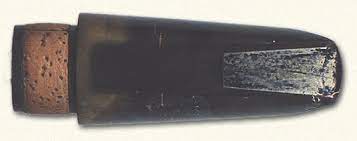 I frequently receive old mouthpieces with every clarinet I buy, and I like to clean them and put them up for sale: some are collectible/desireable and others are just well made old mouthpieces that might be of use to someone wishing to save some money over a new mouthpiece. The main problem is - they often look terrible! Crusty...discolored...tattered cork...who would want that?! Well, it turns out that cleaning up an old mouthpiece isn't that hard, so I'm going to share my experience: Here's a recent set of untreated vintage mouthpieces - pretty ugly! 1) Start by washing - the rest of the process will work best if you remove any greases and oils. I use mild dish detergent, COLD water and an old toothbrush. A drop of soap on the brush, scrub inside and out, rinse. Why COLD? Hot water is the fastest way to turn that old hard rubber mpc green! 2) Soak in vinegar - the acetic acid will dissolve any mineral buildup and soaking (10-15 min on average) will help loosen any remaining stubborn gunk. More toothbrush scrubbing after this...Repeat as needed. 3) Rub with 3 in 1 oil - this trick rejuvenates the hard rubber and removes much or all of the age discoloration. Put a drop on the mouthpiece, rub thoroughly with fingers. Let sit for a couple days - you'll see darkening and increased shine - repeat if needed. 4) Rub with a polish cloth, gild logos with a gold crayon, and recork - polishing will remove the last of the oil and heighten shine, gold crayon will make faded logos pop, and corking will complete visual cleanup and make the mouthpiece suitable for use by the next owner! I generally use 3/64" sheet cork and 3M rubber cement.
As you can see from the photo below, its an amazing improvement from the original condition! However, if you don't see all the green oxidation disappear, just let it go. I haven't found any process that will get all of it, except buffing with compound...and you have to be GOOD at that not to ruin the mouthpiece! Let it be a little green... |
Archives
February 2024
AuthorThe Licorice Shtick Blog is the creation of the Vintage Clarinet Doctor, a Winston Salem, NC based woodwind instrument repair shop specializing in vintage and antique clarinets, saxophones, and the occasional flute. Categories |

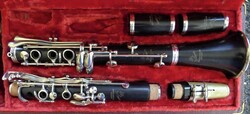
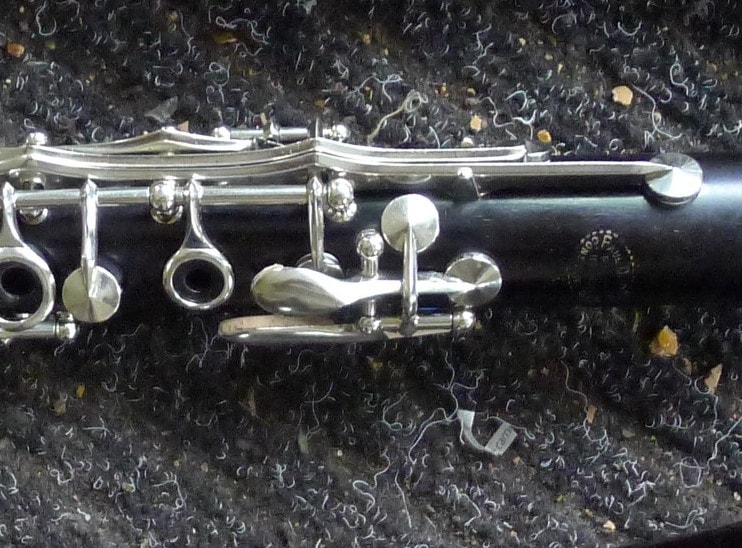
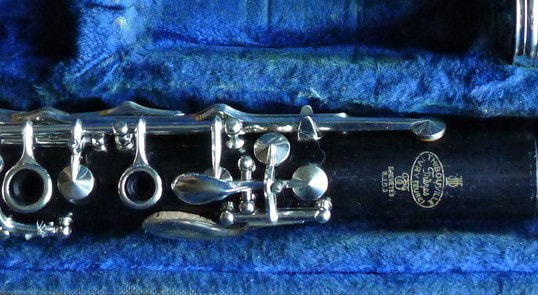

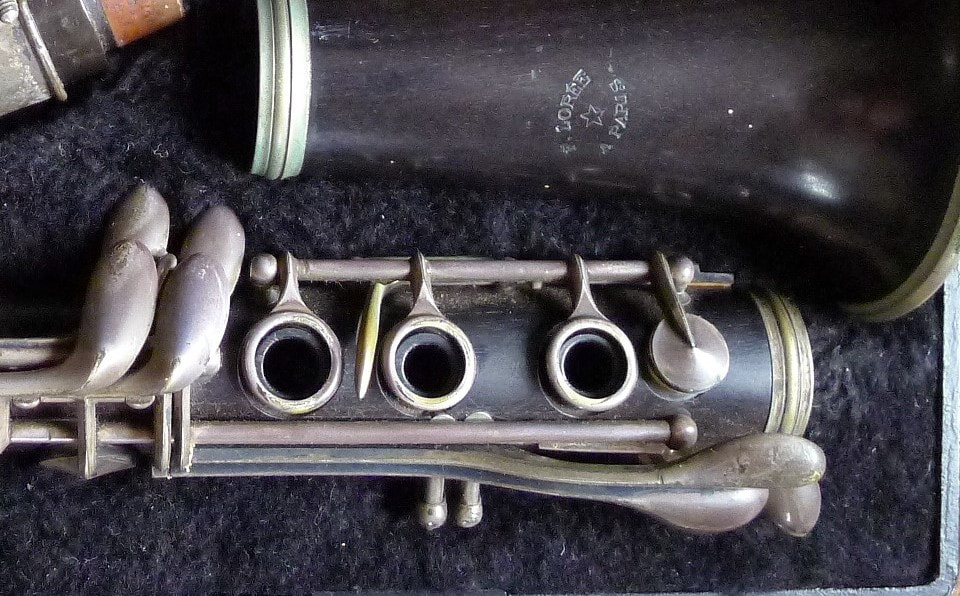

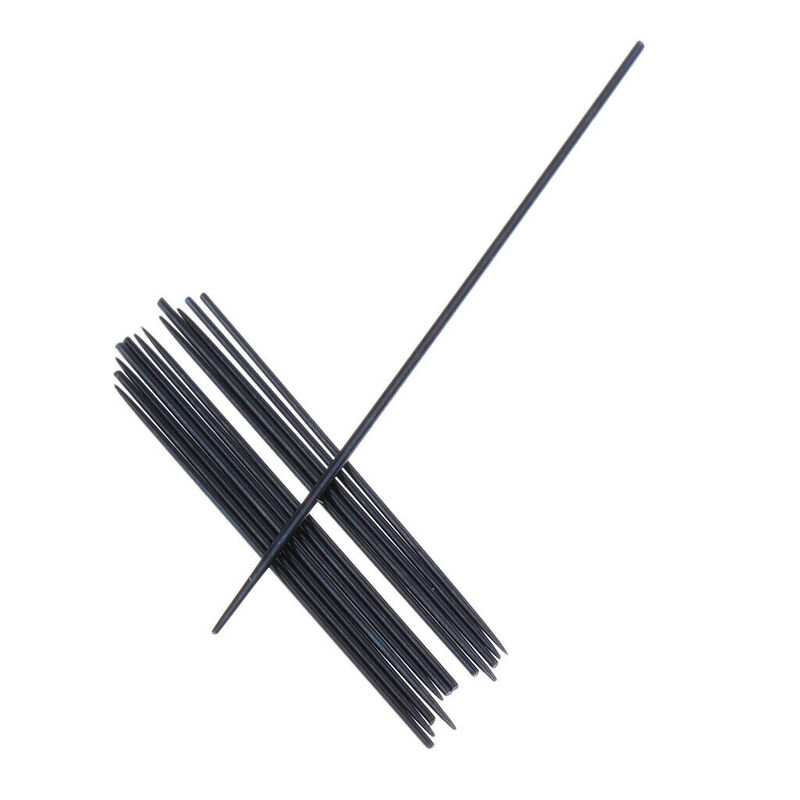
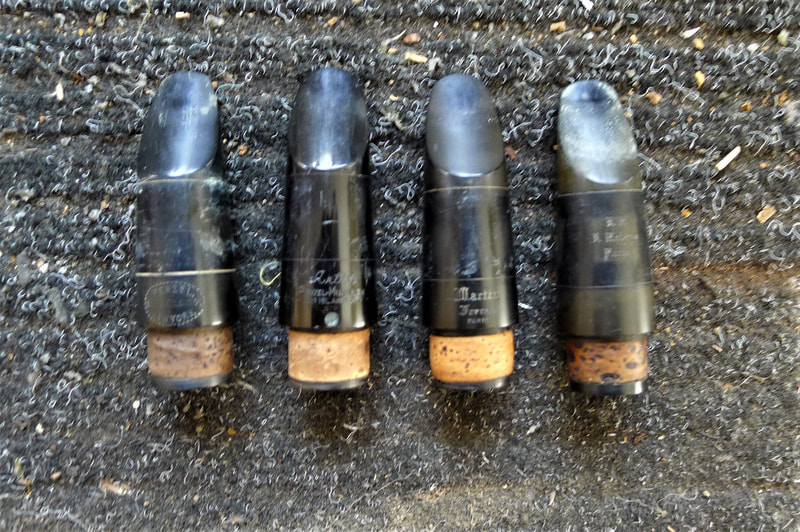


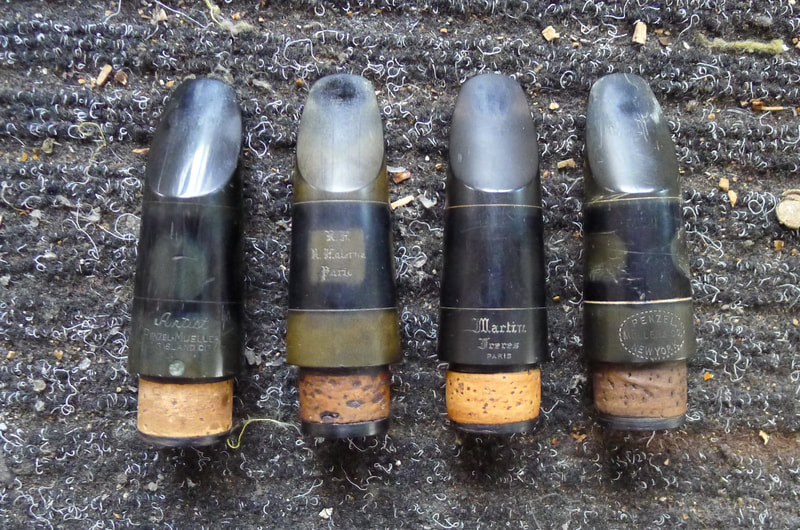
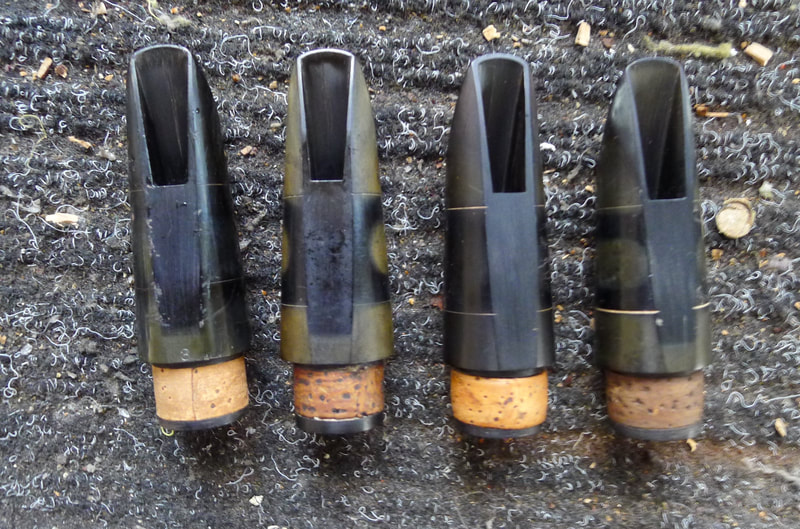
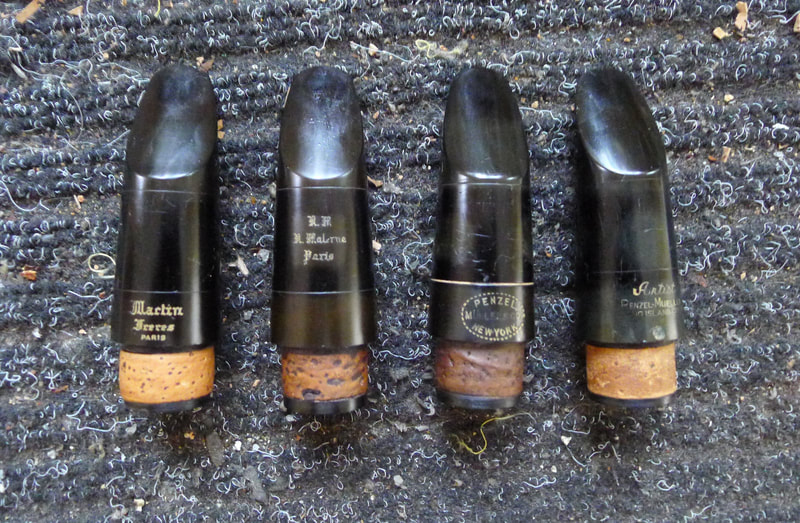
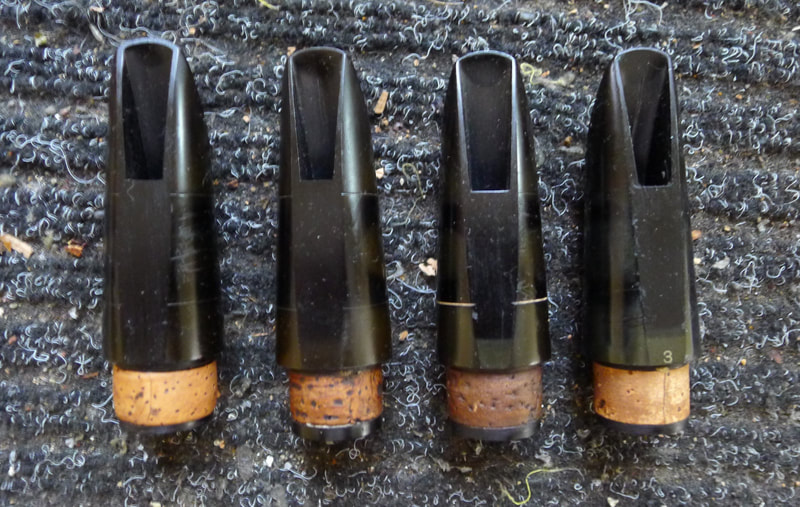
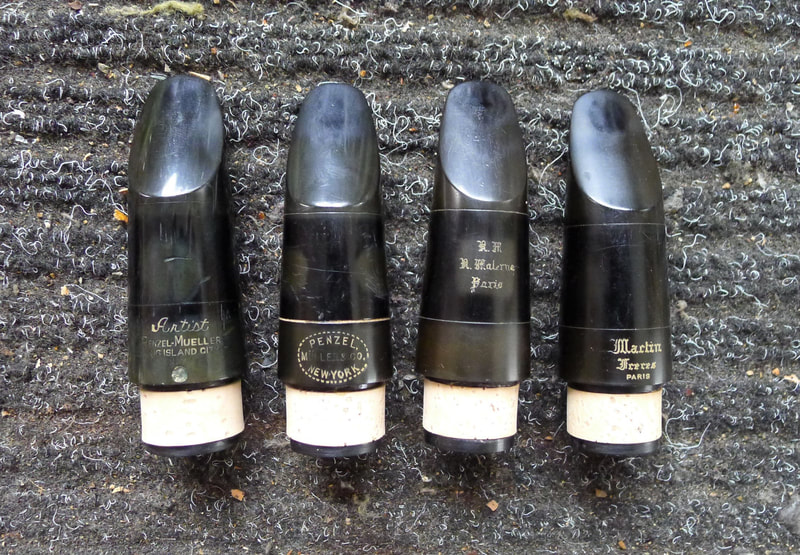

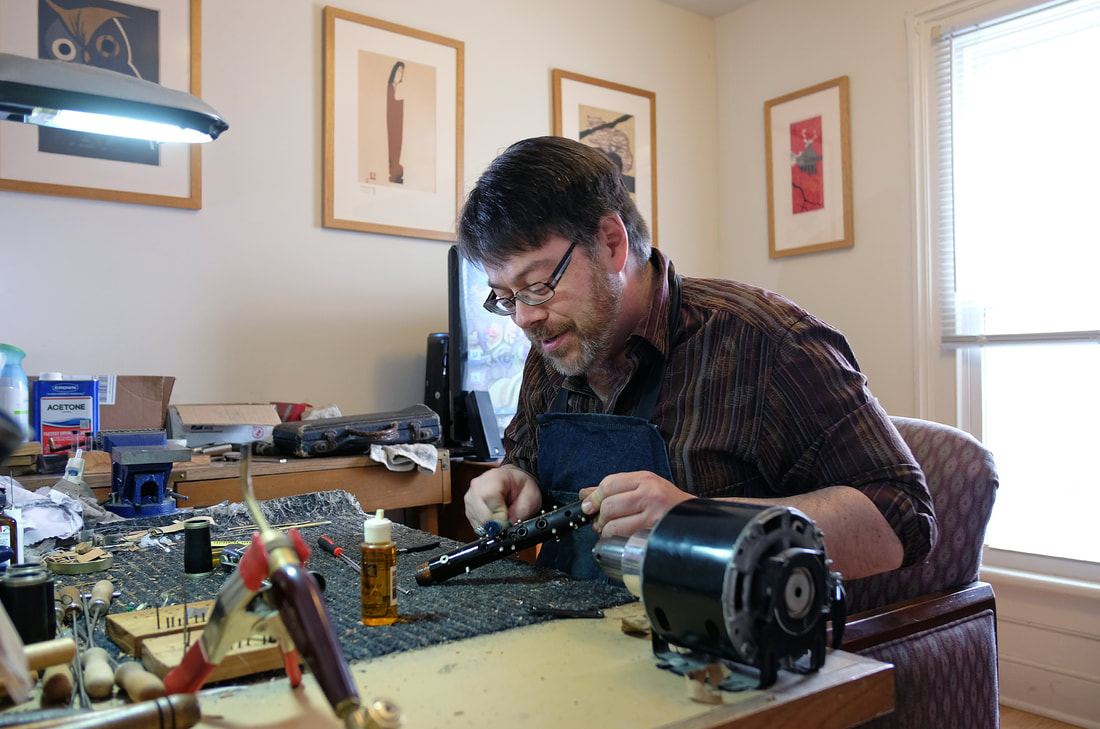
 RSS Feed
RSS Feed